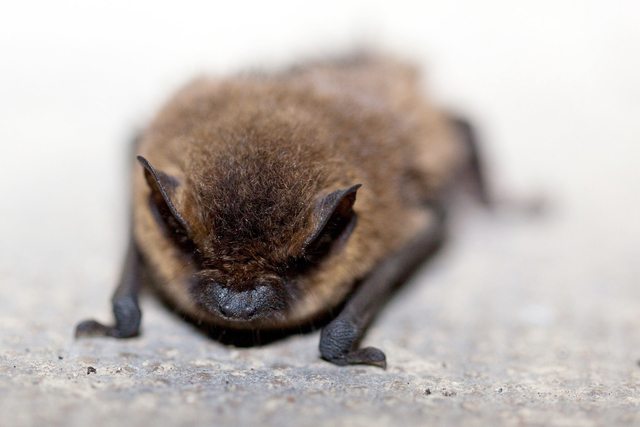Submitted by Kwiaht
An experiment in monitoring the behavior and health of bats electronically was launched on April 2. Bat Grid San Juan Islands, a project of the conservation nonprofit Kwiaht, relies on new-generation ultrasound recorders that make it possible to identify hundreds to thousands of bat flyovers every night year-round.
The initial set of recorders are located at Entrance Mountain, a wetland complex on north central San Juan Island, and Hummel Lake. One recorder was purchased with the proceeds of a Persian dinner hosted by chef Parvin Baharloo at Sunnyfield Farm on Lopez last October, and the Lopez Thrift Shop. Individual islanders sponsored the others.
“Bats chirp all the time they are in flight,” says Kwiaht ecologist Russel Barsh, “at frequencies too high for human ears.” Chirps help bats navigate as well as identify and track insect prey such as flying moths and beetles. Like birds, moreover, bat chirps can be used to identify different species and, to some extent, what they are doing
Recording bat chirps at five to ten times the frequency of human speech requires special microphones, and a recorder programmed to filter out other high-pitched sounds. “Acoustic recordings of bats have been made for decades,” Barsh says, “but the two key recent innovations have made systematic acoustic monitoring possible. One innovation is software that can quickly process tens of thousands of chirps, and identifies most of them to species with a high degree of reliability.”
The other key innovation, Barsh says, has been compact weatherproof recorders and microphones that can be “locked and left” at study sites for months at a time. Only a few years ago, bat recorders simply could not survive a rainy Northwest winter. “Studies were done in summer, usually recording only a few nights at a time,” Barsh recalls. “Bats switch up their foraging routes frequently, taking advantage of fresh hatches of insects, so you really need to be recording every single night to get an accurate picture of which bats are around, and how many.”
It is also clear from previous years of Kwiaht research that bats can move between forests, meadows, woodland and wetlands over the course of a year, and between islands. “Ideally we would have dozens of recorders in the islands, but we are starting with three, and hope to add more later,” Barsh says. Sponsoring a recorder is a great way to advance conservation science while learning about the bats visiting your neighborhood. Once the device is installed, all that’s needed is battery replacements and the occasional download of memory cards.
Barsh says the technology will improve rapidly. Within a few years he expects to be able to add solar power panels and real-time telemetry. “The best part,” he says, “is we can learn so much about bats without trapping or potentially harming them.” What cannot be learned from sound recordings, such as sex ratios or which prey bats are targeting, can be explored through genetic analysis of bat guano.
This facility has special relevance and urgency in light of the discovery of a bat with White Nose Syndrome near Stevens Pass last month. Although our island bats are considered at little risk of WNS because they do not hibernate in caves, Barsh says that the Bat Grid will quickly detect any drop in bat numbers that could be due to an epidemic disease.
For further information please contact: kwiaht@gmail.com





